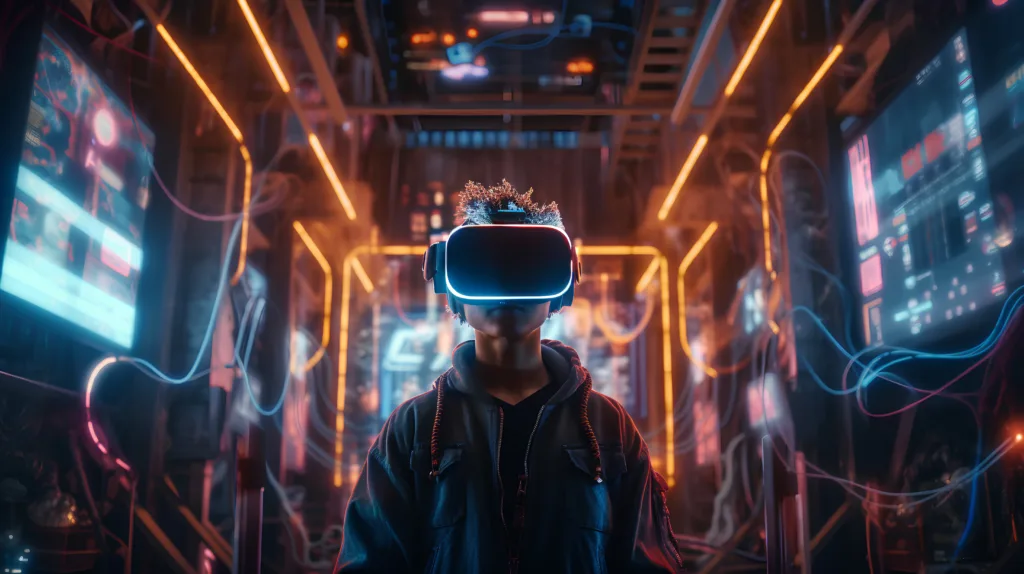By Jordan Bucknell, founder and CEO of Upbeat Marketing
Virtual reality (VR) is on the cusp of fulfilling its potential. So long a concept of science fiction, this immersive tool has been a long time coming, but it could well have been worth the wait, opening up a world of opportunity for businesses looking for new ways to engage their customers. So, how could VR change your marketing strategy?
Nine Things We’re Likely to See in the Future of VR Advertising
Immersive advertising
With VR, advertising has the chance to become so much more exciting. Your customers are no longer merely viewers – they can become active participants. Whether you wish to take them on an adventure, or into a mystery or drama, every ad holds the potential to become an experience for your customers while delivering ‘hands-on’ experience of your products.
Super personalisation
While VR is engaging and impressive, when you combine it with artificial intelligence (AI), you can answer your customer’s needs like never before. Showcasing products and services that will not only be of genuine interest, but could solve their problems while making you sales. You can also build customer loyalty by demonstrating how well you understand each customer’s needs.
Utmost respect
Of course, with AI comes the potential of intrusion. And that way lies an abuse of power. So, while you can use it to create the most compelling sales pitch, businesses must use the technology wisely. Ensuring that your customer’s privacy is always respected, and that tailored advertising never intrudes into unwelcome spaces.
Unobtrusive advertising
There’s no getting away from it, right now, most ads are annoying. They break up your TV shows and barge their way into apps, disrupting and demanding your concentration in a way that could arguably be considered as rude. With VR, your ads can be more effective by being less obtrusive. Rather than demanding attention, they can augment a virtual scene, adding a sense of reality as a billboard on the virtual roadside, a shop window in a virtual high street, or a jingle on a virtual radio.
Virtually try before you buy
Ever wondered what the operational difference between a Fire Tablet and an iPad might be? Or how it actually feels to test drive a Lamborghini? Today’s ads can only go so far. With VR, you can put your customers in the driving seat and really let them see for themselves. They can use those tablets, comparing them side by side for each individual task. They can take that car across any virtual terrain you give them – cruising on a coastal road or splashing through Atlantis – anything to make the experience useful, fun, and engaging.
Appeal to the senses
The fully immersive VR, Ready Player One experience isn’t quite there. But we’re pretty sure that it one day will be. Meaning that while your customers are cruising along in your virtual Lamborghini, you can let them wind down the window to feel the wind in their hair, take in the scent of the ocean air, and feel every little bump in the road. Bringing your products truly to life with a complete sensory experience.
The merging of worlds
What could happen when actual reality (AR) and VR merge? The best customer experience ever! When VR ads combine with AR services, your virtual purchases can be come a reality. Hungry while gaming? Get that sushi delivered to your door. Like the trainers that avatar is wearing? Why not order them through the in-world app? VR and AR can make the imagined possible.
VR hangouts
The only thing better than hanging out with family and friends is being able to do it without leaving your couch! When businesses create VR hangouts, they are creating a social space where customers can chat, shop, share retail finds, watch films, and ask purchasing opinions in real time – without having to trudge through the rain to do so.
Keeping it safe for everyone
Of course, as any tech becomes established, regulation becomes necessary. And while it’s currently a little way off, regulatory compliance will be necessary in VR. To safeguard kids, to safeguard customers and their money, and to safeguard businesses.
How will businesses move into VR advertising?
Like most new technology, getting VR right will take investment. And not all businesses will have the necessary funds. But, like most forms of advertising, there will likely be a range of potential entry points available. That might mean teaming up with VR influencers to get them to showcase your products or collaborate on your content. It could mean the creation of ads – billboards and the like – in established virtual worlds, or the creation of sponsored ‘side quests’ within popular games. Or, for the brands with more cash to splash, there will be exclusive VR world creation.
VR advertising is coming. It’s not yet polished and ready to go. But it’s not far off. And that’s a very exciting prospect for businesses, advertisers, creatives, and customers alike. Opening up whole new worlds of possibility.









